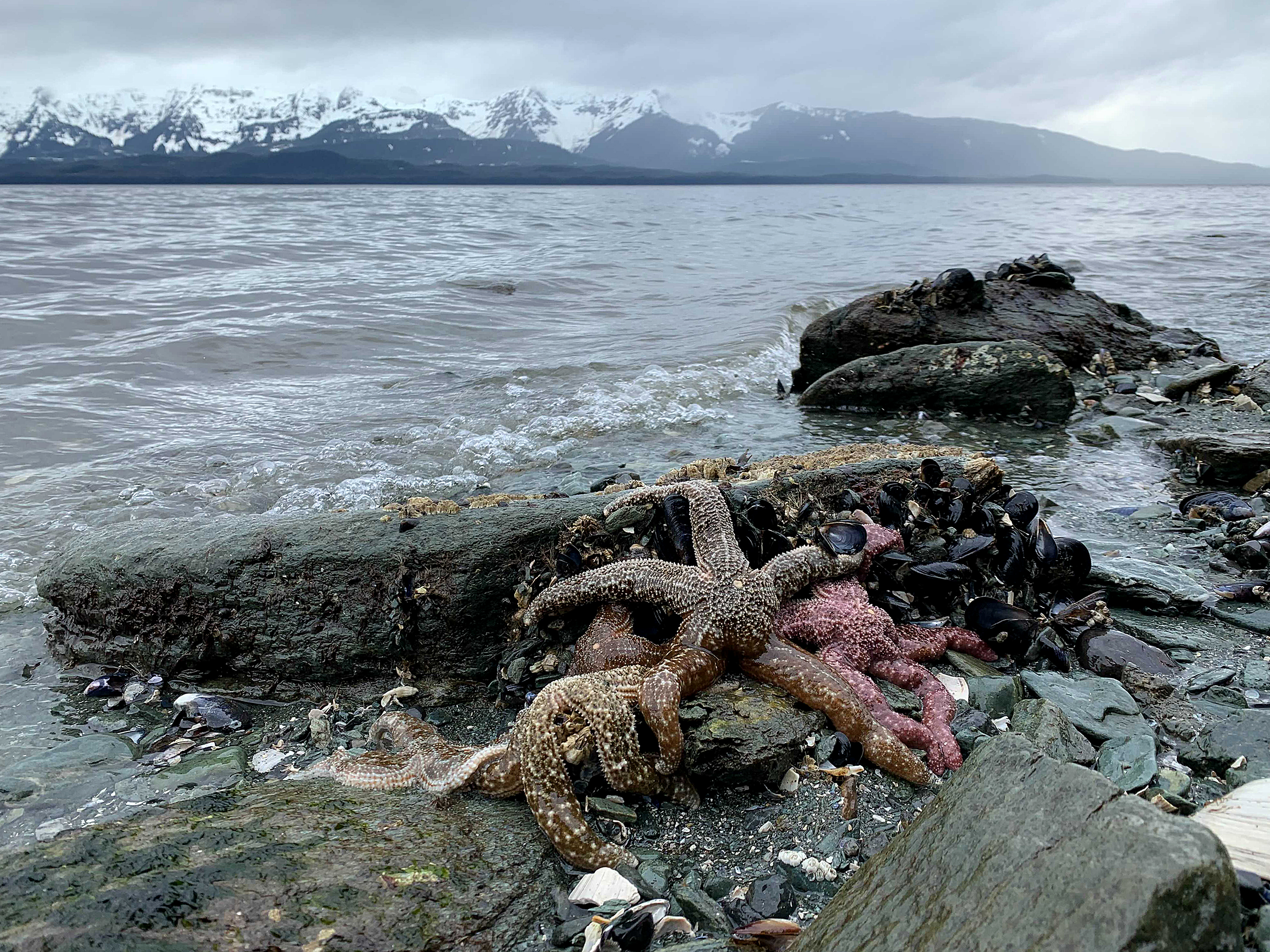
A lot of people know it’s not a good idea to eat shellfish in the summer. It has long been thought that eating shellfish this time of year is safer — but that’s just not true anymore.
Researchers at an environmental lab run by the Sitka Tribe of Alaska have flagged shellfish on several Alaska beaches for high levels of potentially lethal toxins.
Lindsey Pierce is an environmental technician with the Central Council of Tlingit and Haida Indian Tribes of Alaska. She’s based out of Juneau. And she’s the point person for their shellfish program.
That means part of her job is to go out to beaches where people are harvesting shellfish and gather some for testing. And they’re looking for a few different kinds: Cockles, butter clams, littlenecks if they can find them.
And they pry blue mussels off of the rocks — those are something of a super-filter, going through several gallons of water each day. Researchers say they can be an early warning sign that there are toxins in an area.
Sometimes, when she’s not working. Pierce heads back out to the beach to collect some for dinner. Generally, she’s looking for cockles and she has a lot of ideas about how to cook them.
“You can put them in the pan whole and then steam them open. Or, you can shuck them, you know, pry them open and get the meat out … it’s all in your preference,” she said. “You can do like a butter garlic sauce.”
Hungry yet?
Pierce isn’t. She laughed and said, “I collect them for my family, but actually, I don’t like eating clams.” It’s a texture issue.
So Pierce’s team collects samples from Point Louisa and Amalga — beaches in Juneau where they know people harvest shellfish. Other people in town have recommended they test Eagle Beach and Pt. Bridget too, but Tlingit & Haida hasn’t added those ones yet.
The shellfish samples that Pierce’s team collects get sent to a lab operated by the Sitka Tribe of Alaska. It’s part of a group called Southeast Alaska Tribal Ocean Research, commonly known as SEATOR. That lab tests shellfish for a group of 17 tribes in communities across the Gulf of Alaska.
“Each tribe has identified a beach or two that they feel their community members go to primarily for subsistence harvesting,” said Naomi Bargmann who runs the lab in Sitka.
She says the ultimate goal of the shellfish testing is to help tribes manage their resources. It’s a food security issue. But they also make the data available to the general public. And right now, they’re the only ones doing that. The state only tests commercially harvested shellfish.
Despite the regular testing, Bargmann makes it clear they are not certifying any beaches as safe.
“We never say a beach is safe because there’s always a risk when consuming wild shellfish,” she said.
You can’t cook or freeze the toxins out. You often can’t see the algal blooms that cause them. You can’t taste them, and sometimes shellfish from the same spot on the beach will have wildly different levels of toxins in them. It’s basically an invisible killer.
Still, deaths from paralytic shellfish poisoning in the state are rare. A fatal case in Dutch Harbor this year was the first in a decade.
The data is meant to help tribal citizens, and others, make educated decisions about where and when they’re harvesting. There are some ways to be safer. First, all commercially harvested shellfish in the state are tested. So you can always just buy them. In fact, that’s what the state suggests doing.
If you do want to collect them for yourself, you can pay to send samples of your haul to the state’s lab. Or, for about $50, you can send them to the lab in Sitka.
The Sitka Tribe of Alaska’s lab put out its latest test results on Wednesday. Researchers are warning about toxins in butter clams harvested in Craig, Ketchikan, and Kodiak — and for all species they tested from beaches in Hoonah, Juneau
